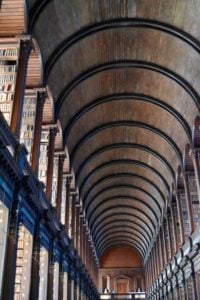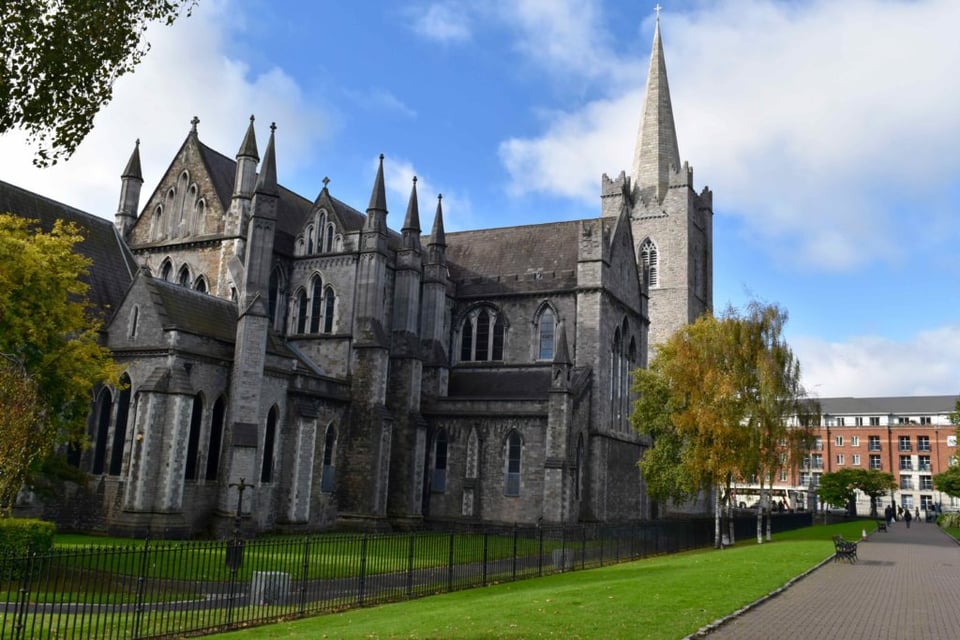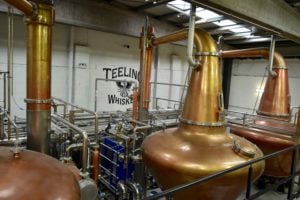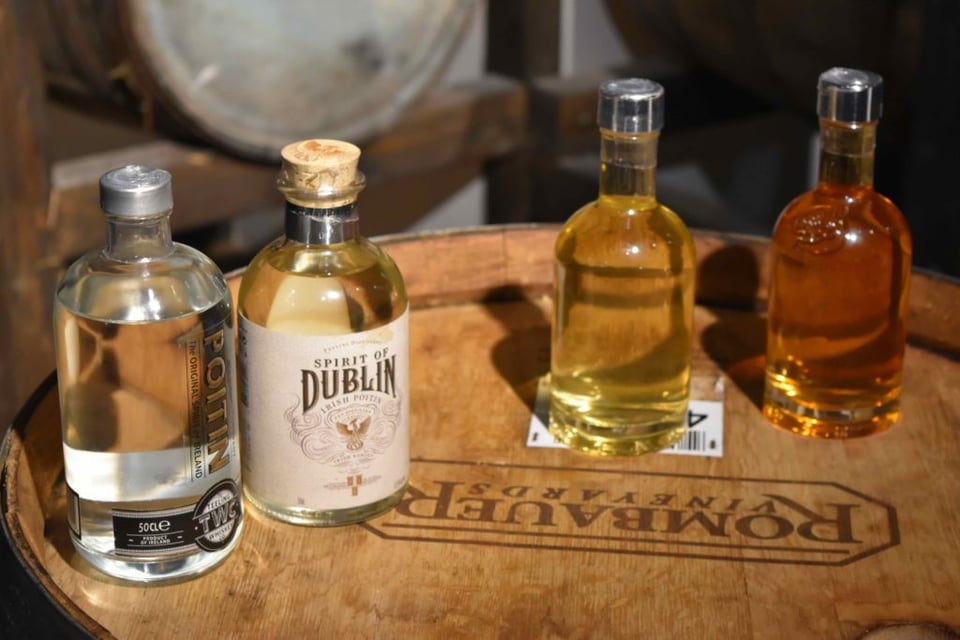Ireland Beer & Whiskey tour - day 3 Glendalough
Editor's note: the tour actually took place in mid October 2016.
Our Joe Sixpack Ireland Beer & Whiskey tour continues in Dublin featuring the Book of Kells. Today we left the hotel for a quick bus tour of the city of Dublin. The city is currently putting in a new tram line and so many streets are under construction. During the short bus ride to Trinity College our guide pointed out the Georgian architecture (especially the doors of Dublin), St. Stephen's green (one of three Georgian squares of the city) where the rebellion of 1916 started. She also pointed out Oscar Wilder's birthplace and James Joyce's influence on the city.
The first day's blog post is here.
Editor's note: the tour actually took place in mid October 2016.
 The Long Room, Trinity College. The book of Kells is stored in the room below
The Long Room, Trinity College. The book of Kells is stored in the room below
The Book of Kells is at Trinity college which is in the center of Dublin. This is an elaborately illustrated manuscript from the year 800. After an overview tour we had plenty of time to explore the exhibition ourselves. Truly magnificent to see this ancient text. The book was written by monks at about the time the Vikings started arriving in Ireland meaning that it survived many plundering, fires and theft.
The book is remarkably colorful; the monks found many of the colors from naturally occurring rocks and minerals that were mixed into the ink. There are many animal symbols embedded into the artwork emblematic of the medieval understanding of the world (pre-enlightenment). I found this ironic given that the exhibition was named "Turning Darkness into Light". Everything is relative I guess. We also learned that manuscripts required about 185 sheep for the lambs skin pages. This is a fantastic look at some of the things that the 8th century monks produced.
The ground floor of Trinity College library houses the Book of Kells. The second floor consists of the "Long Room" which is a fascinating look of how the old library collections were once housed (and still are here at Trinity). It also houses the oldest surviving harp in Ireland from the 15th century which is the basis for the symbol of Ireland (not just of Guinness!). This certainly puts American "history" into perspective.
Driving from Trinity college across town we crossed in front of St. Patrick's cathedral. This is a classic cathedral built in the 12th and 13th century and is where Jonathon Swift is buried. This is where St Patrick dug a well in the 5th century to baptize his converts.
 St. Patrick's Cathedral, 12th century
St. Patrick's Cathedral, 12th century
Our next stop was to the Teeling Distillery. Teeling only recently (2012) started producing Irish whiskey in Dublin,
 The fermentation tanks at Teeling. Three stages of pot stills
The fermentation tanks at Teeling. Three stages of pot stills
though it has a history starting in 1782. The tour was a very interesting look behind the scenes and featured their triple still pot distilling vats. These huge vats(15000, 10000 and 9000 liter respectively) are one of the distinguishing characteristics of Teeling. many mass produced products use a distillation column instead of the pots more efficient) and those competitors that do use the pots tend to use a 2 step distillation (like Jameson, though they are changing as well). Another distinguishing characteristic is Teeling's creative use of wood barrels for the maturation process (a minimum of 6 years for Teeling's commercial market). Traditional they use oak barrels from Cabernet Sauvignon, but they are experimenting with many different barrels from whiskey's to wines to beer aged wood.
We were treated to a couple of tastings of Irish whiskey which were smooth and every bit as genuine as the Scotch whiskeys which have become some dominate. From the early 1900's the Irish market share went from about 50% to 2% and so there's a lot of catching up to do. After the tastings most went to the bar to try some additional samplings such as whiskey in porter barrels.
 Various stages of Teeling Whiskey. Prior to maturation, Poitin, 3 yr old barrel aged, 6 yr old barrel aged
Various stages of Teeling Whiskey. Prior to maturation, Poitin, 3 yr old barrel aged, 6 yr old barrel aged
We then arrived back to the hotel where lunch and the rest of the afternoon was on our own. The group assembled for a very nice dinner at the hotel. After dinner some retired to their rooms while others went out on further quests for local beer or whiskey experiences.
Today we went from a 8th century manuscript, to a 12th century cathedral to a distillery which originated in the 18th century and was revitalized in the the 21st century. Yet the city is not particularly striking from an architecture standpoint. Dublin appears to me to be all about the experience rather than the visual sights. And travel truly is about experiencing rather than seeing. We look forward to more experiences in the upcoming days.
Editor's note: the tour actually took place in mid October 2016.
Today we leave Galway and visit two breweries and a bar on our way to Trim. This is our last full...